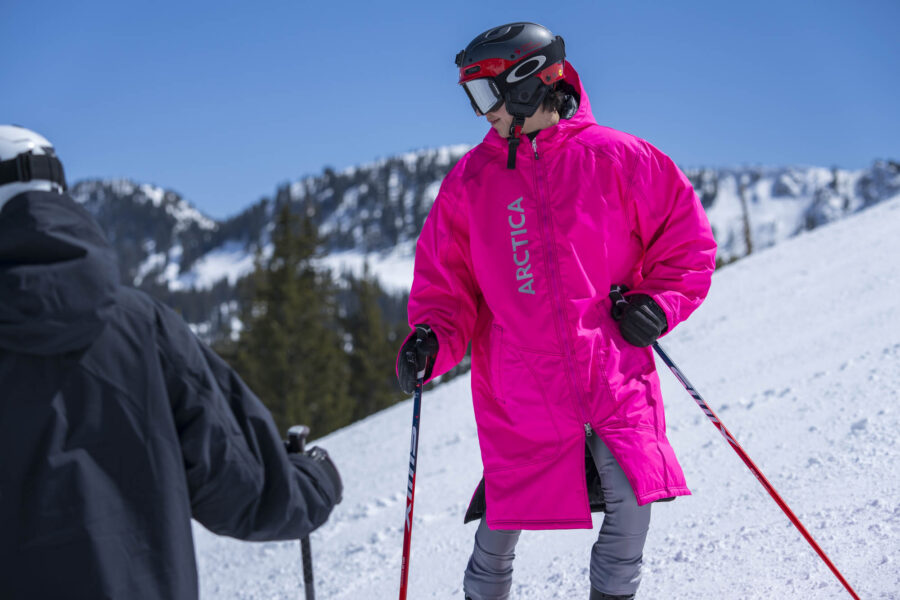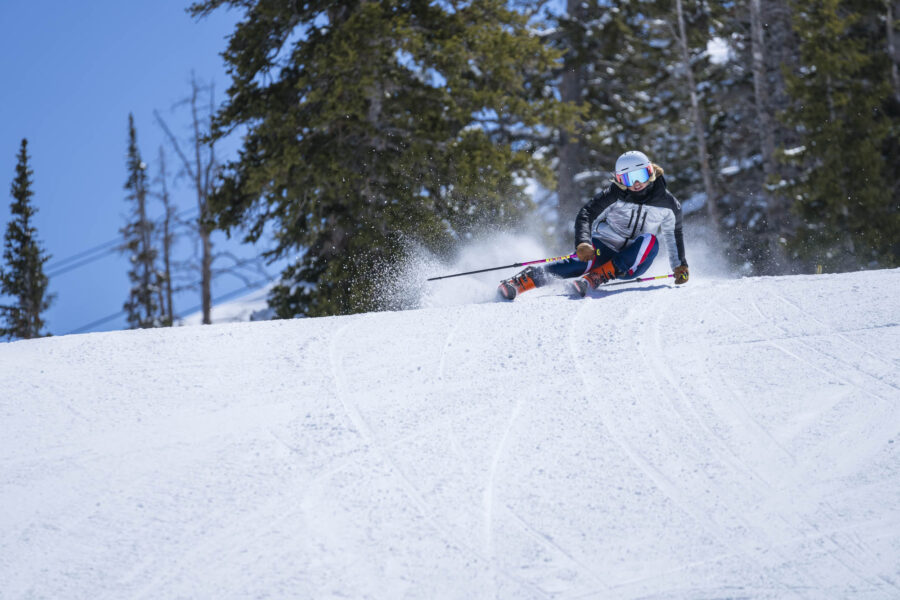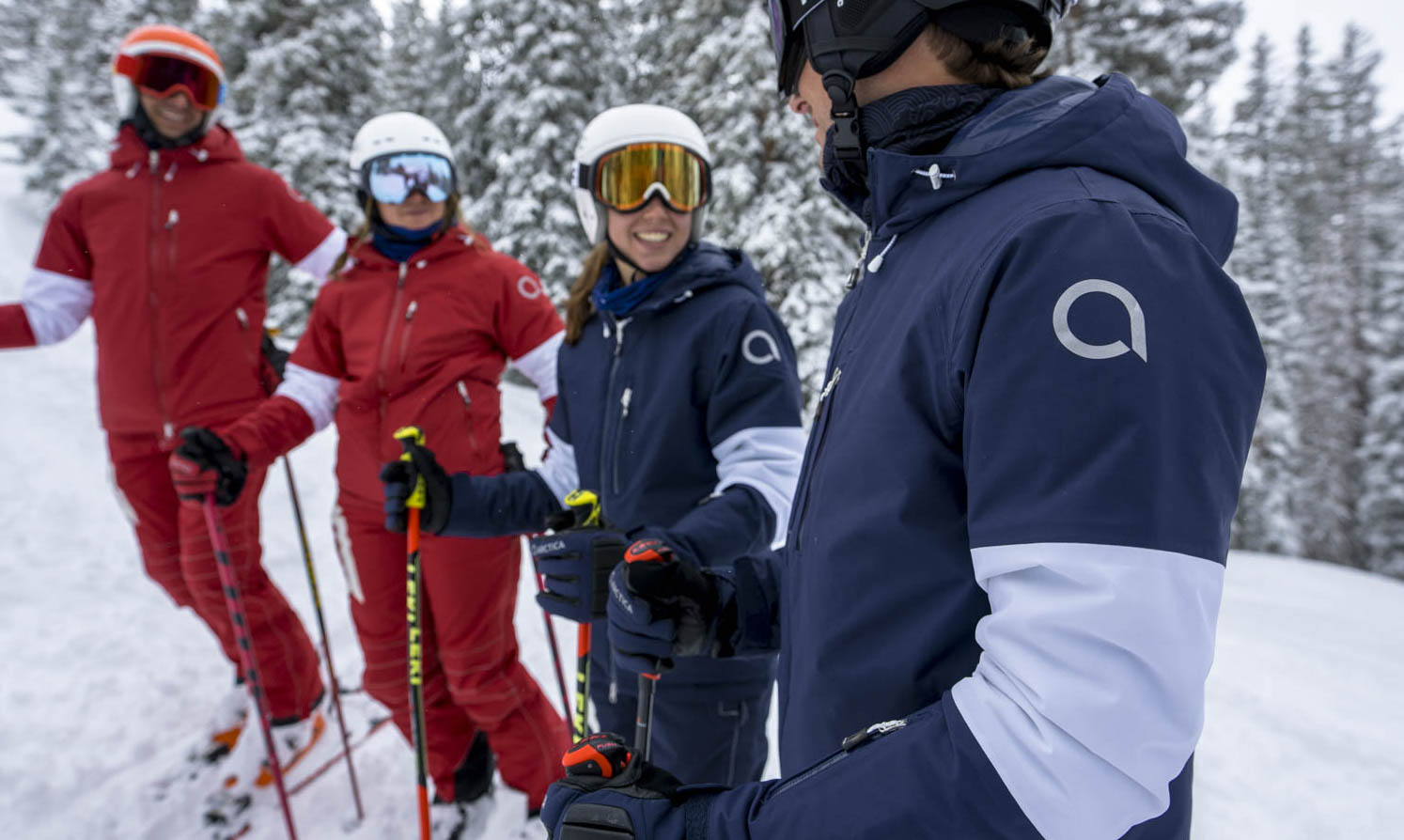So, you’re halfway through the ski racing season, and every ski race course inspection leaves you wondering if you really know what coach means. Terms like fall-away, funnel, offset, and rhythm change start to go in one ear and out the other. Or maybe you have course inspection vocabulary down but struggle with the big picture: how do I put it all together? How do I translate a good course inspection into a good ski race run?
Throw on your inspection A Team Warm Up Coat and side-slip along on our quick guide to ski racing course inspection.
Let’s start with the basics.
Ski Racing Course Inspection Terminology
Fall line – The natural path a ball would roll down a slope. It’s the shortest, most direct line down the hill, following the pull of gravity.
Fall-away – When the fall line slopes away from the direction you’re skiing. This makes a turn more challenging since the terrain naturally pulls you away from the ideal line.
Rhythm – The tempo at which the course skis. A straight course on a steep slope has a high-tempo rhythm, while a turny course has a slower rhythm.
Distance – The spacing between gates down the hill.
Offset – The lateral spacing between gates across the hill.
Rhythm section – A section of the course where the gates are set consistently, allowing you to get into a groove. Typically, if the distance and offset are the same for six or more gates on a consistent slope, it’s a rhythm section.
Rhythm change – A place where the tempo of a course shifts. For example, after six gates set at the same rhythm, a sudden change in distance, offset, or terrain would create a rhythm change.
Terrain – The natural features of the ski slope, such as rolls, steeps, and flats.
Rollover – A point where the slope gets steeper. A blind rollover is when you can’t see what’s on the other side from above.
Funnel – A section where the offset between gates gradually decreases. Courses often funnel into the finish, transitioning from a turnier section to a straight one, requiring an increase in skiing tempo to keep up.
Bogey – A seemingly randomly placed gate that disrupts a rhythm section, designed to challenge skiers and force adjustments.
Stacks up – When the spacing between gates gets tighter or the pitch steepens, increasing the tempo. If you don’t adjust, the course will feel like it’s coming at you too fast, making it hard to stay on line.
What’s the Point of Course Inspection?
Prepare for the Course
It’s that simple. At its core, course inspection gives you a preview of the ski race course. You get a chance to learn what’s on the other side of every rollover, identify tricky sections, like bogey gates, sections that stack up, and rhythm changes, and where you can let your skis run straight and look for speed. At the very least, you should leave your inspection knowing where any potential trouble spots are. A good course inspection can also help you decide which drills to warm up with.
Assess the Snow Conditions
The snow on the race hill doesn’t always match the other trails. Race organizers may skip grooming the race venue to optimize snow conditions. Take note during your inspection. Is the snow hard, soft, slick, grippy, breaking away? Compare the race course snow to snow conditions on the warm-up trails to understand how to adjust your skiing for snow conditions.
Mental Preparation
Take your ski race course inspection to the next level by incorporating mental performance techniques. As you inspect, visualize yourself skiing your best—nailing a blind rollover, generating speed across a flat, or executing your technical focus. The most effective visualization techniques vary from skier to skier, so experiment to find what works best for you.
Making the most of your ski racing course inspection can help you achieve your best ski race results. Pay attention, talk to your teammates and coaches, and commit to best practices for ski race day success. Good luck!
Meet the Arctica Ambassador Team
We caught up with Arctica Ambassadors, Ash Stein and Olivia Mihalek, to ask what they love most about skiing. Ash, hailing from Park City, Utah, said, “Just the unique feeling of skiing and going fast!”. Olivia, a ski racer from Spirit Mountain said, “I love going fast that’s why I love skiing so much love the feeling of being out of control but in control at the same time. I also love the friends I’ve made and the people I’ve met because of skiing.”






Leave a Comment
You must be logged in to post a comment.